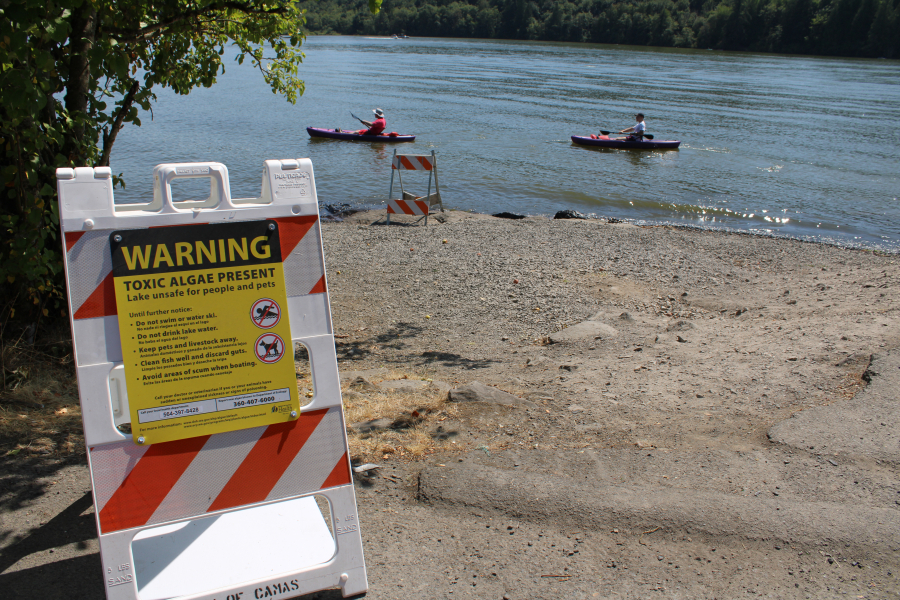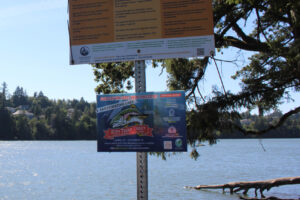The signs used to appear infrequently, maybe once every couple years, warning swimmers, kayakers, boaters and dog walkers of a blue-green hazard floating in Camas’ prized Lacamas Lake.
Then, in 2018, the lake — known as “the jewel of Camas” — experienced two toxic algae blooms. By 2019, the algae, which can sicken humans and kill pets, came back at least five times. And by 2020, Lacamas Lake was experiencing what city of Camas staff recently called “near-continual toxic algae blooms” throughout the spring, summer and fall.
And the problem isn’t just impacting Lacamas Lake.
“Nearby Round Lake has also seen increases in blooms, though not as severe, and Fallen Leaf Lake had its first reported bloom,” city staff noted in a 2021 report, adding: “There is concern all three lakes will continue to degrade.”
Camas Public Works Director Steve Wall said 2020’s “near-continual” algal blooms in Lacamas Lake worried many longtime Camasonians.
“There was a big difference from 2019 to 2020,” Wall said of the toxic algae and the number of warning signs that went up around Camas’ largest lake. “When they started seeing caution signs and then, last year, hazard signs, it did draw a lot of attention.”




